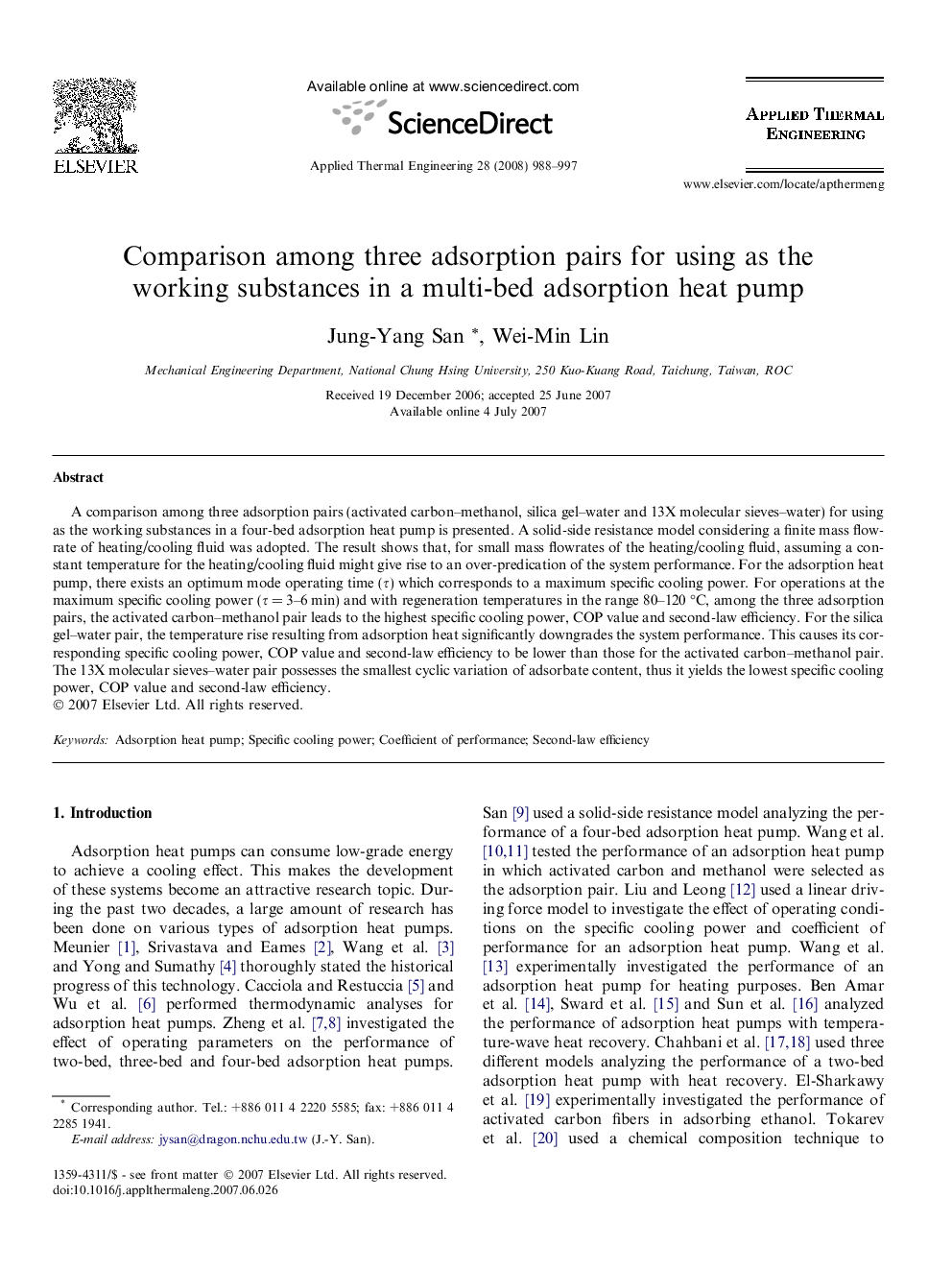| Article ID | Journal | Published Year | Pages | File Type |
|---|---|---|---|---|
| 648509 | Applied Thermal Engineering | 2008 | 10 Pages |
A comparison among three adsorption pairs (activated carbon–methanol, silica gel–water and 13X molecular sieves–water) for using as the working substances in a four-bed adsorption heat pump is presented. A solid-side resistance model considering a finite mass flowrate of heating/cooling fluid was adopted. The result shows that, for small mass flowrates of the heating/cooling fluid, assuming a constant temperature for the heating/cooling fluid might give rise to an over-predication of the system performance. For the adsorption heat pump, there exists an optimum mode operating time (τ) which corresponds to a maximum specific cooling power. For operations at the maximum specific cooling power (τ = 3–6 min) and with regeneration temperatures in the range 80–120 °C, among the three adsorption pairs, the activated carbon–methanol pair leads to the highest specific cooling power, COP value and second-law efficiency. For the silica gel–water pair, the temperature rise resulting from adsorption heat significantly downgrades the system performance. This causes its corresponding specific cooling power, COP value and second-law efficiency to be lower than those for the activated carbon–methanol pair. The 13X molecular sieves–water pair possesses the smallest cyclic variation of adsorbate content, thus it yields the lowest specific cooling power, COP value and second-law efficiency.
